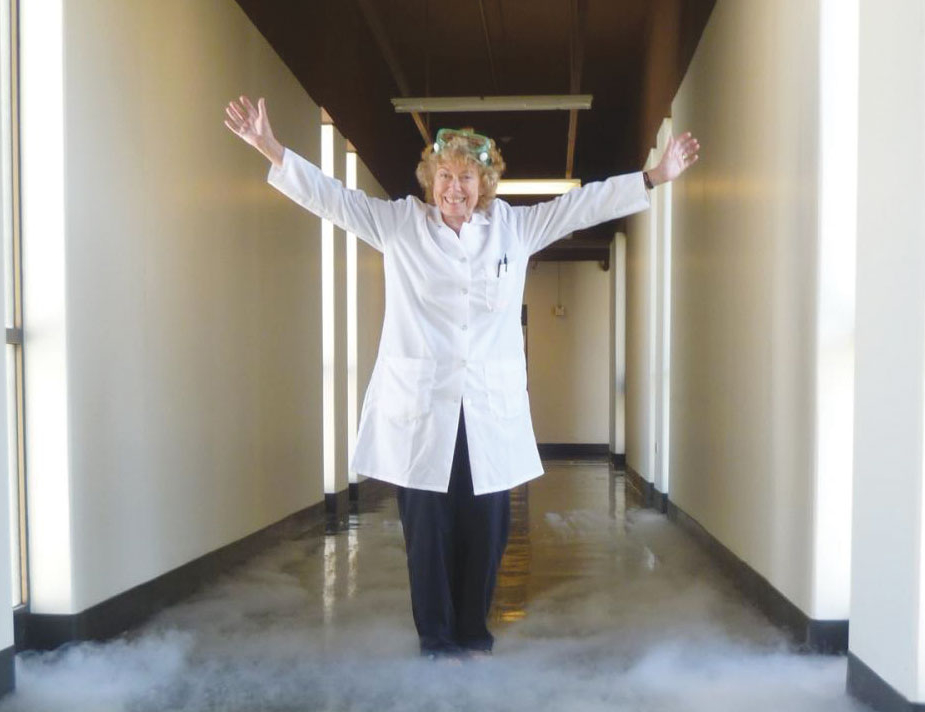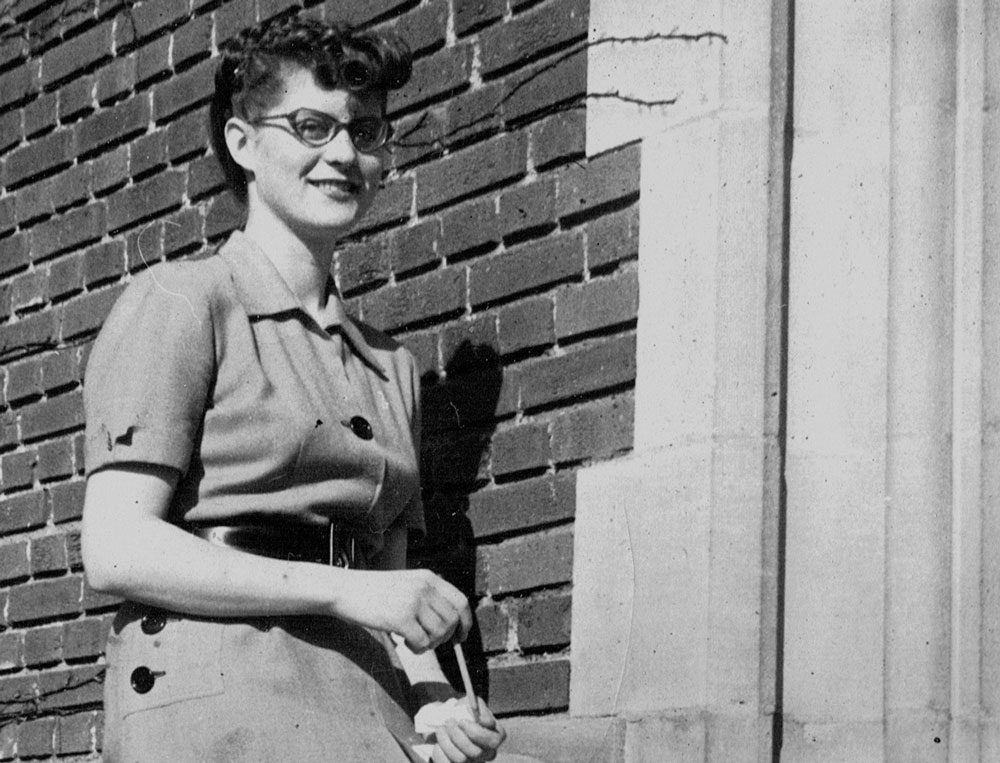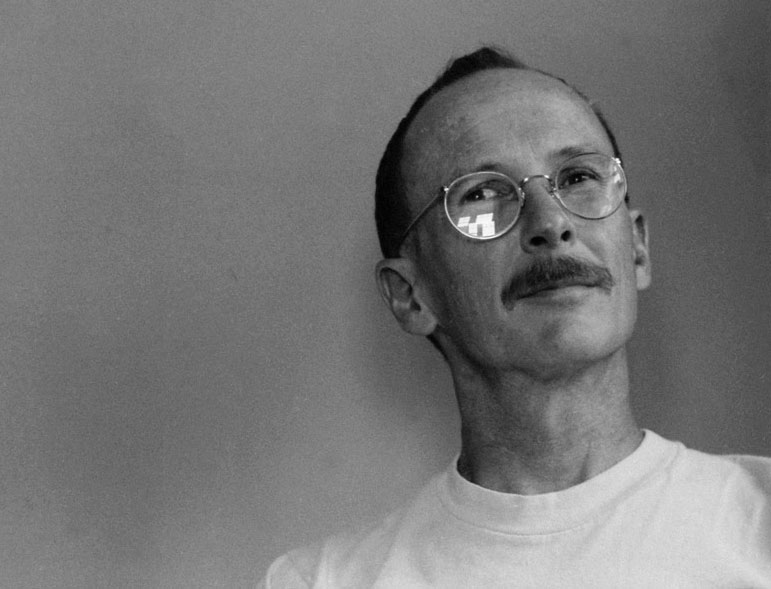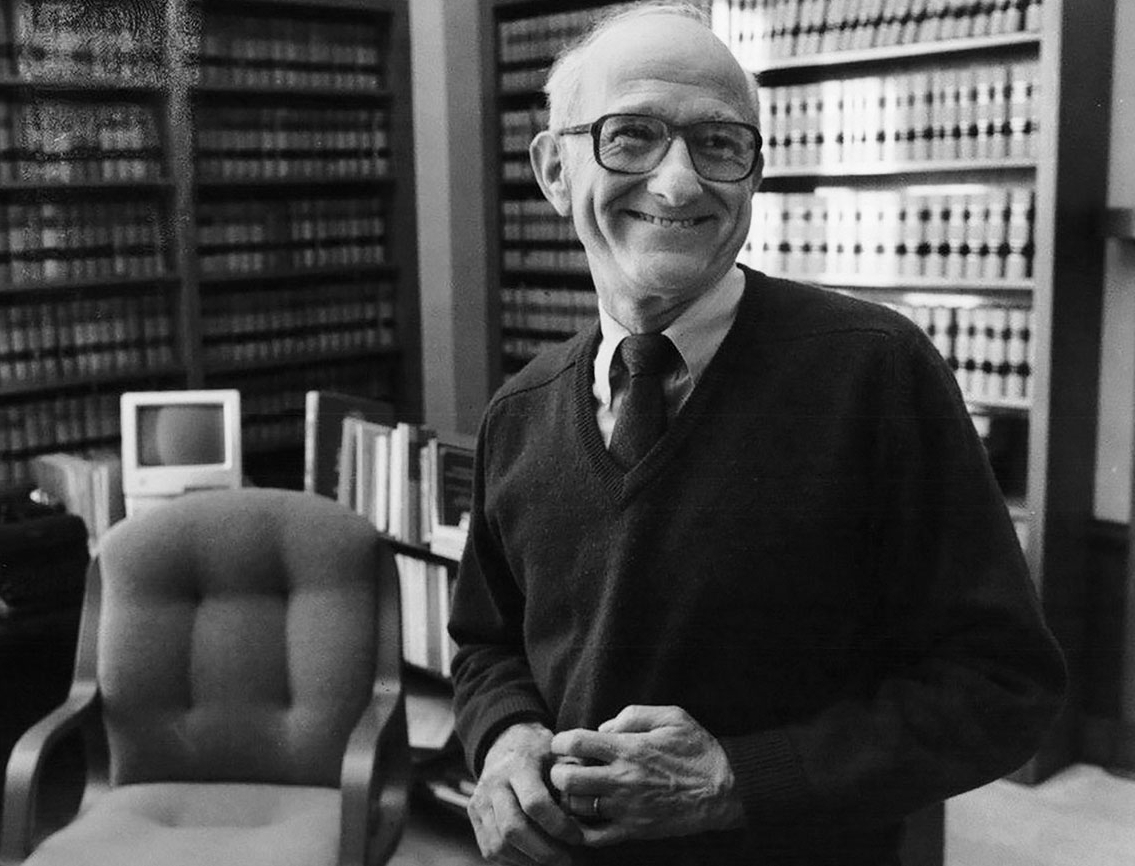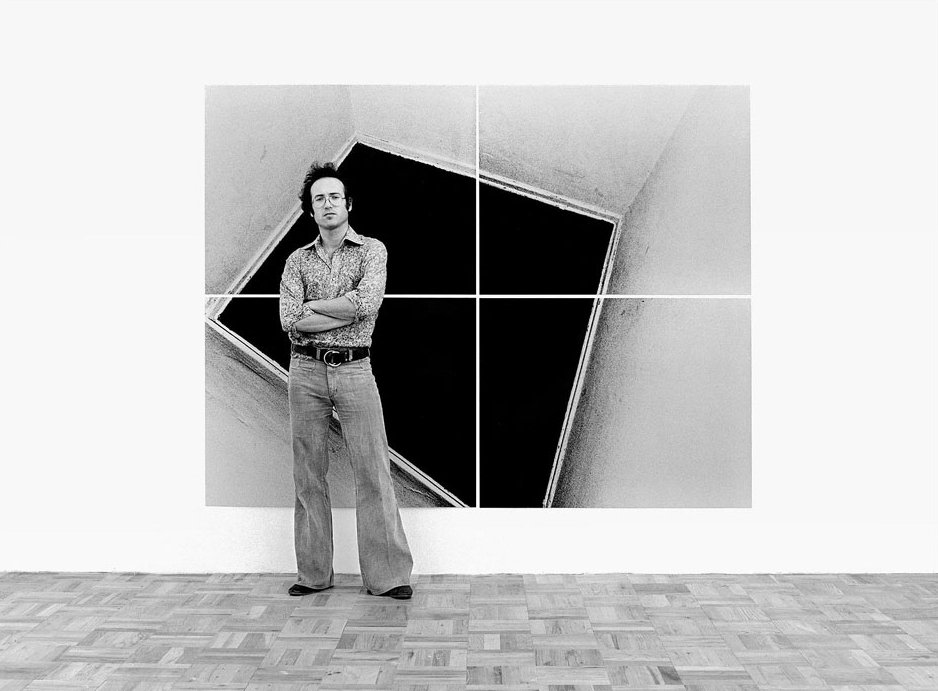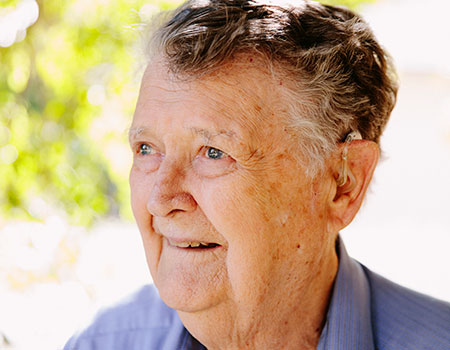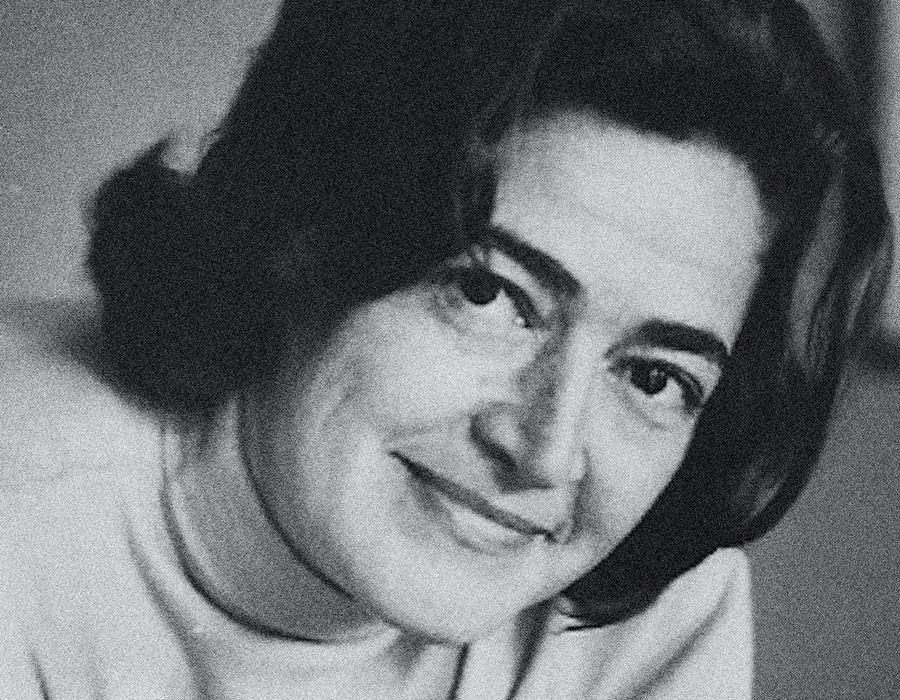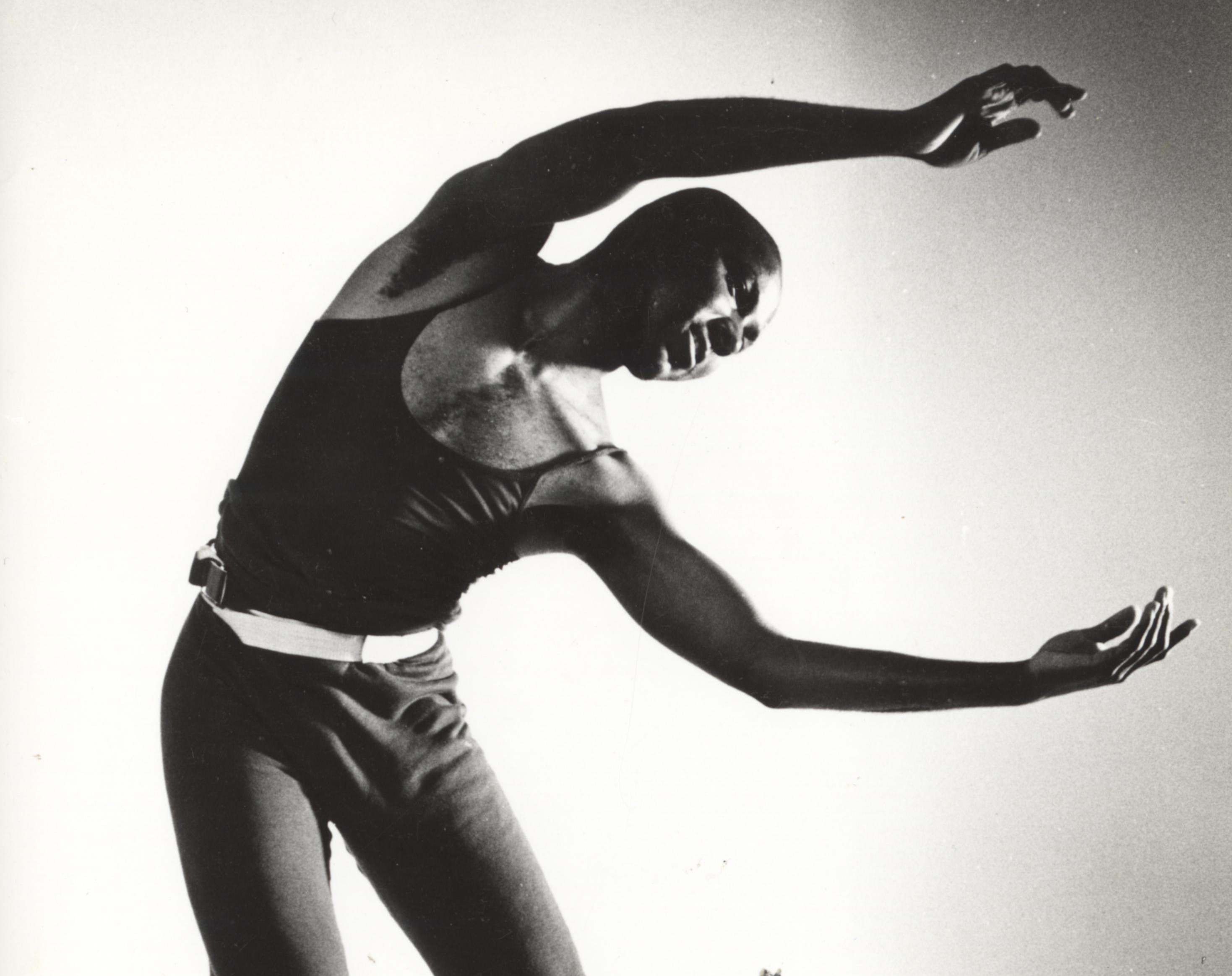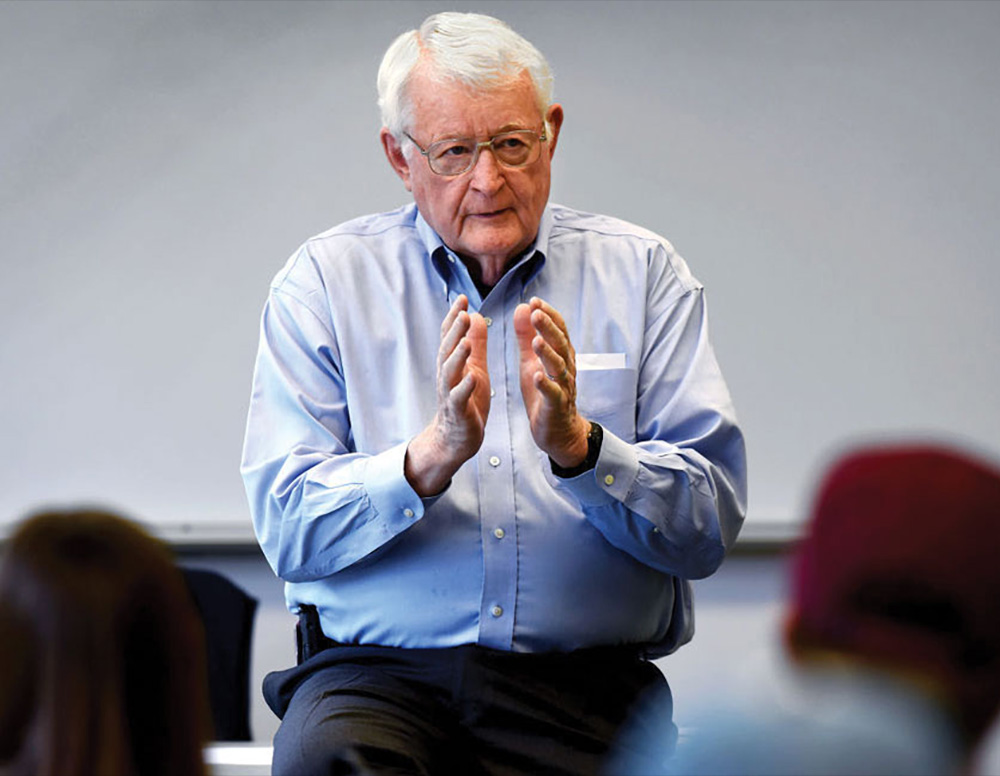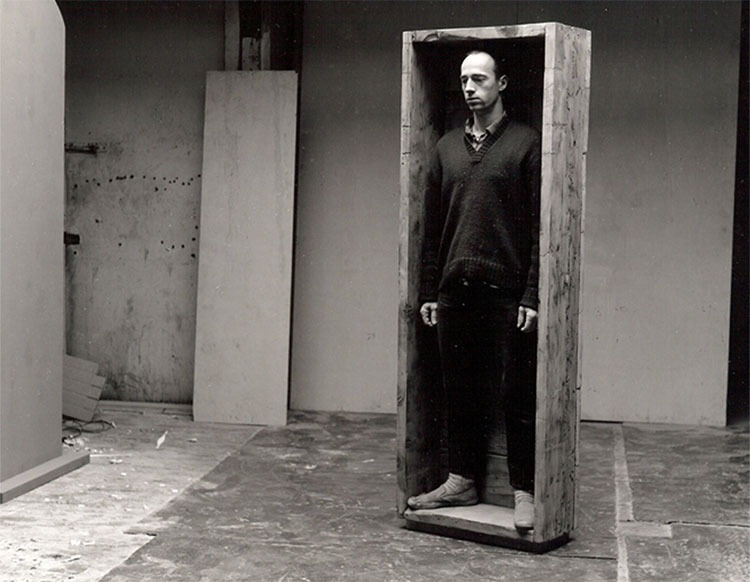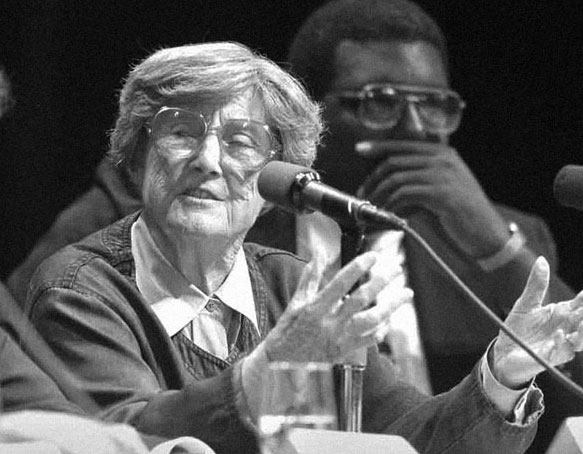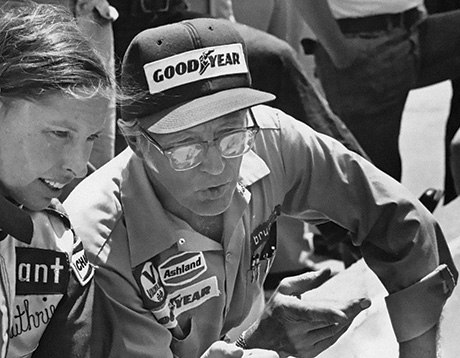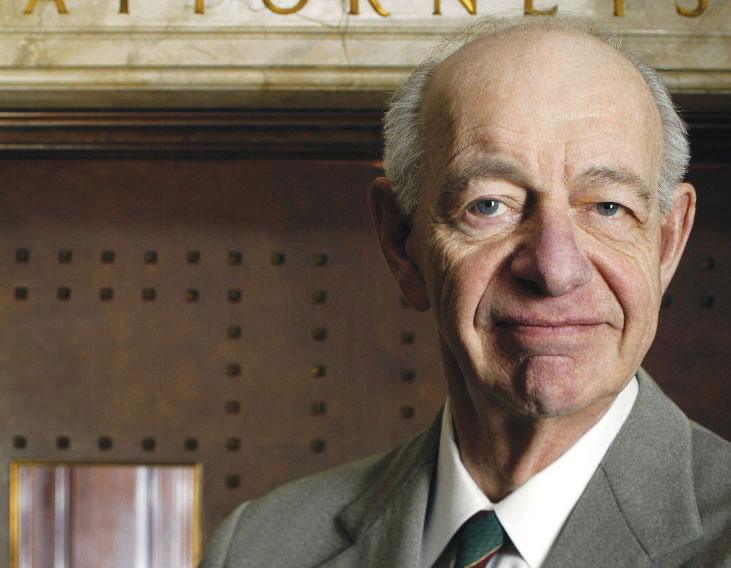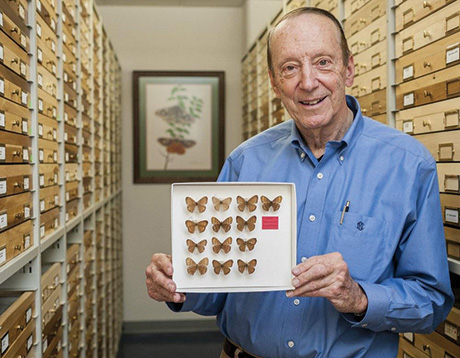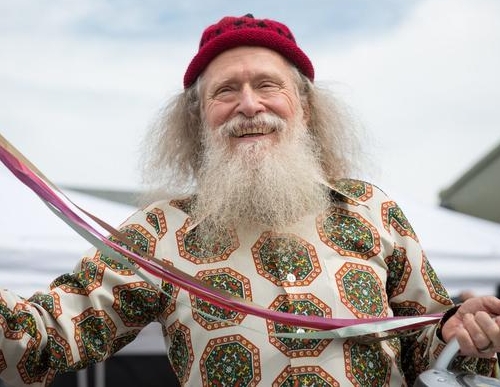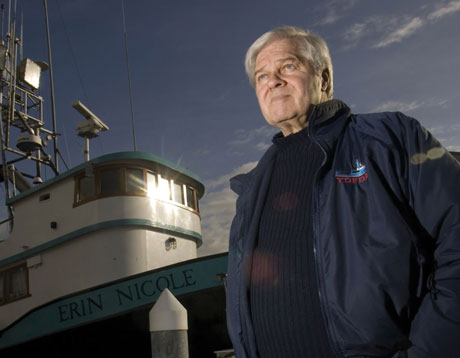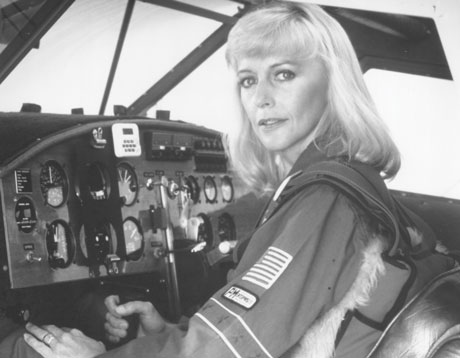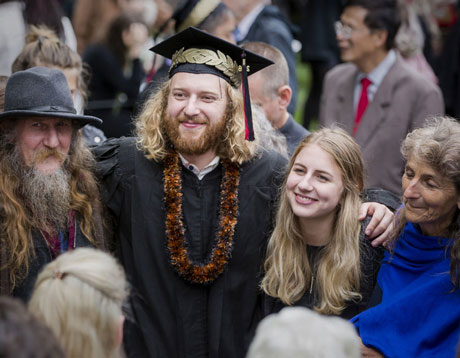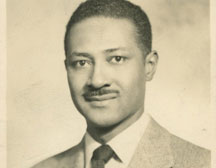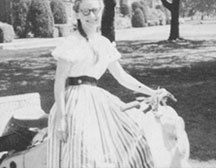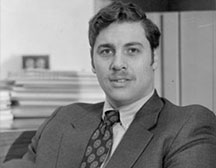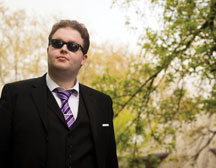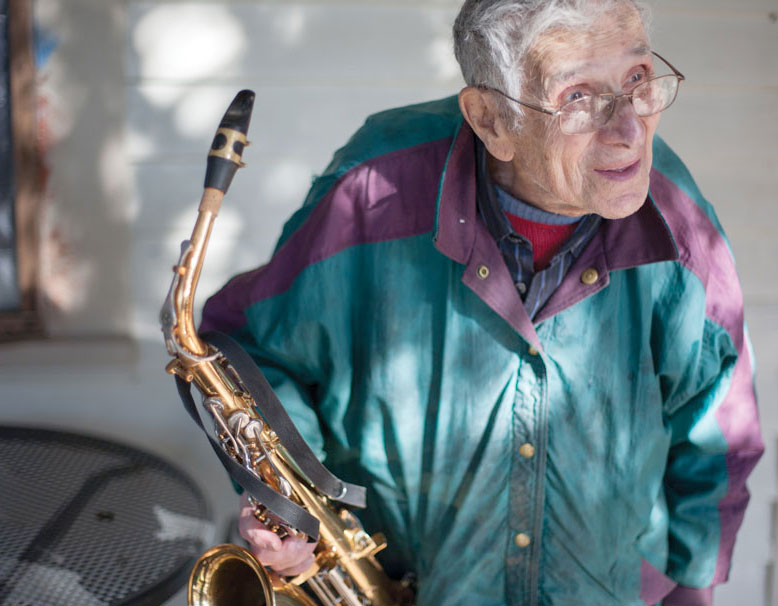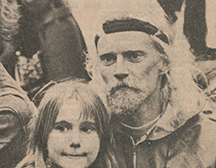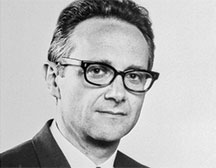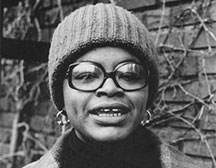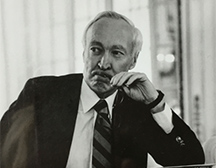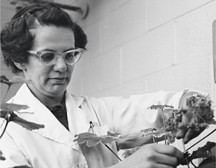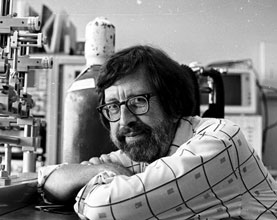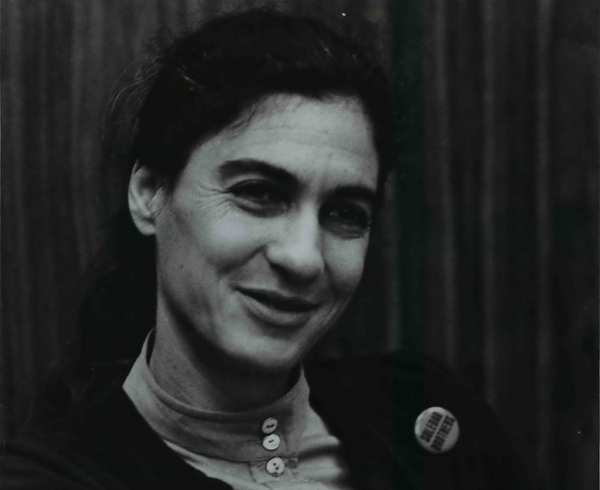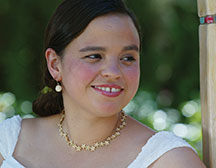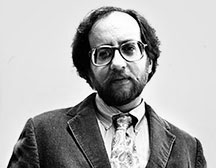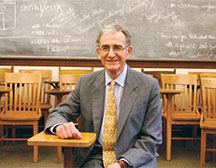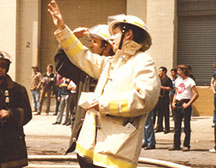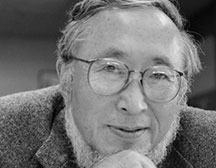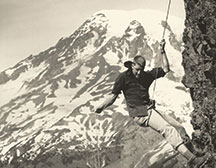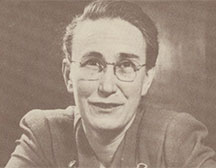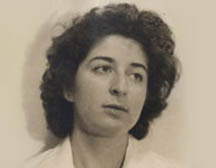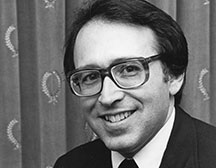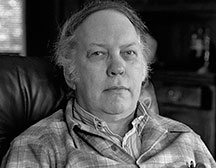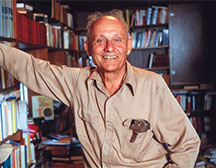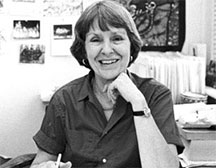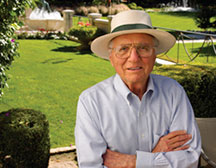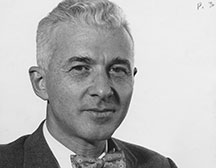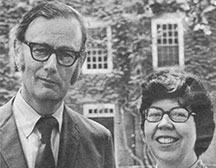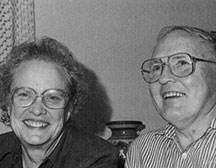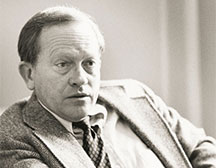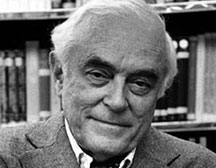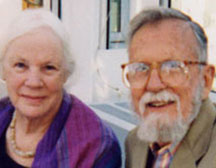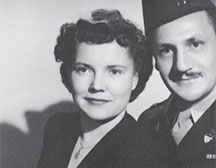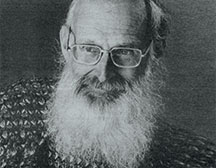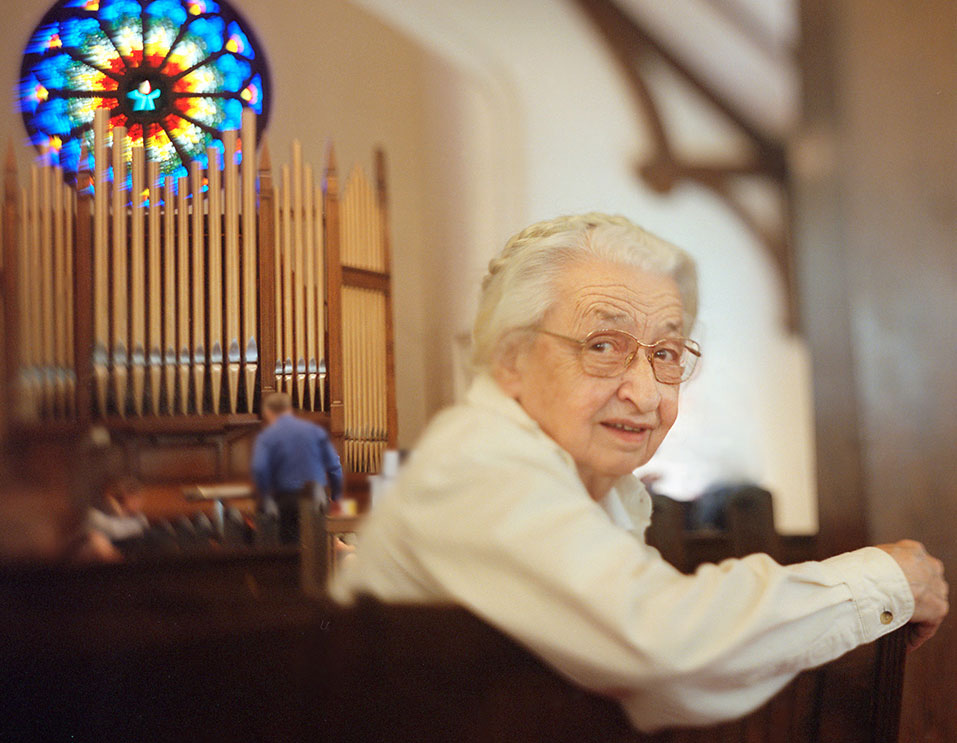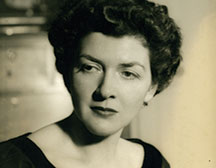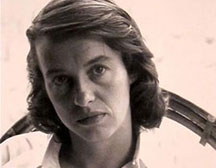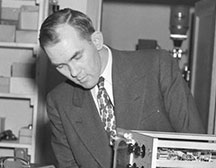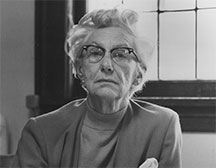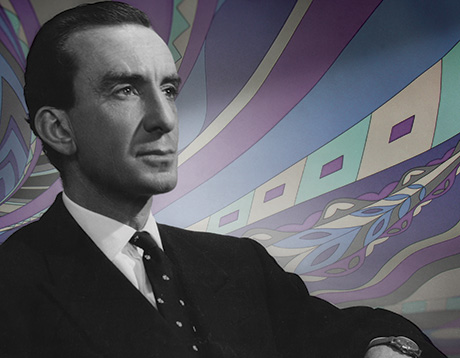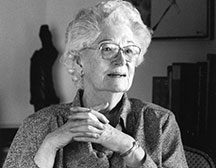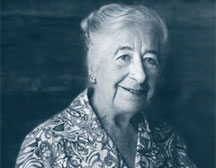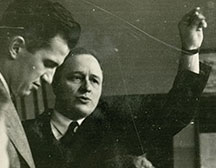Kathleen Flannigan ’62
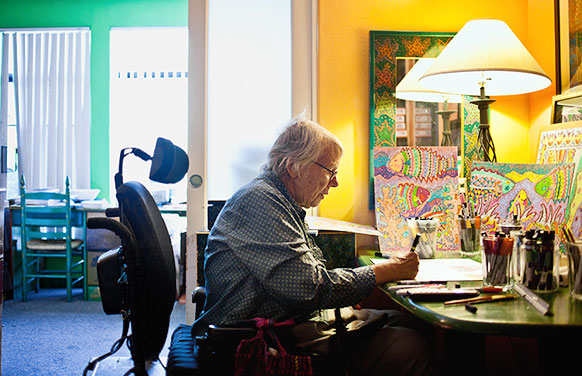
“Some say my artwork is triumphing over my disability, but my disability has been helpful to me,” says Kathleen Flannigan ’62. “Instead of fighting it, I exploit it.” PHOTO BY ARIEL ZAMBELICH
Born with cerebral palsy, Kathleen became a celebrated artist who exploited her disability instead of fighting it. “My work is unique because I am unique,” she said. “I envision my work as refuge, sanctuary, as holy and healing.”
Her work was shown at the Smithsonian; in Brussels, Belgium; and in Rio de Janeiro. She was an artist in residence at the California Academy of Sciences, and won numerous prestigious awards, including a Pollock-Krasner grant. She also held a part-time job at Disability Rights California, a law firm where she consulted and liaised with the disabled community.
Socially isolated throughout her childhood, she sought refuge in animals and plants, caring for them and drawing them incessantly. At an early age she staked her claim on the territory of nature, drawing inspiration from the imagery, detail, patterns, and color of Vincent Van Gogh’s paintings. She felt his power as a master and mentor and felt an affinity with his isolation and creativity.
Cerebral palsy, a neurological condition that can affect movement as well as the senses, first appeared when she was a girl. “I had a strange gait,” she recalled, “and my mother wanted a perfect child, so I had all these operations.” The operations were unsuccessful and left crisscrossing scars on the backs of her legs, permanent reminders of her “childhood terrors.”
She walked on her toes, lurching along on rigid legs and swinging her arms vigorously to propel herself forward and to maintain her balance. Cerebral palsy affects each person differently, but it did not impair Kathleen’s intellect—she excelled in her Catholic high school.
At Reed she flouted convention and lived with three male students in a beatnik group house on Southeast Long Street. It was a primitive domicile, without heat.
“We’d sleep in the attic on sleeping bags, wore Levi’s and cowboy hats, Navy watch-caps and black turtlenecks,” she remembered. Because it was unusual in those days for a single woman to live with men, she gained something of a wild reputation. At the end of her sophomore year Kathleen married Richard Morgan ’60 on campus. They were given the Doyle Owl as a wedding present and had to hide it. Kathleen left school and followed her husband to his sociology graduate program at the UC Berkeley. Within four years they had two sons. Within five, she was in crisis. Marriage and motherhood had bestowed upon her a conventional social status and the approval of her parents. But she felt deprived of the opportunity to establish an authentic and fulfilling life. In the milieu of Berkeley in the ’60s, she yearned to explore the world as a free spirit.
Instead, she turned to alcohol and powerful prescription drugs, and became depressed, suicidal, and out of control. In 1971, Richard divorced her and assumed custody of their sons. Left to a renewed dependence on her parents, by the mid-’70s she was found, nearly lifeless, on a California beach at dawn.
But by the ’80s, she was back in Berkeley and beginning to thrive. In 1981, she returned to school at the California College of the Arts and for the next quarter of a century embraced life as a person and as an artist.
Living with a disability was part of what brought Kathleen’s art to life. She was a studio artist at the National Institute of Art and Disabilities in Richmond, California, and later founded the Artists with Disabilities Empowerment Project (ADEPT), opening a gallery space for artists with disabilities in Berkeley. She became knowledgeable in laws and policies affecting the disabled and served an advisor to various groups and organizations with respect to the rights and experiences of the disabled.
Richard, her former husband, noted that Kathy was uninhibited, could be unpredictable, and was apt to ignore personal boundaries. She tapped a stream of energy that allowed her to recklessly focus on any encounter, project, or artistic endeavor.
“In her presence there was a palpable sense of exposure to an occult power, of being engaged with someone who was living partly in another world,” Richard said. “One could not help but wonder what she felt and what she saw, and her art only reinforced that wonder.”
The last decade of her life was again filled with hardship. She underwent major surgery for cancer and made do on Social Security benefits in subsidized housing, dependent on her caregiver for daily assistance and an electric wheelchair for mobility. Her care manager declared that she was the most medically challenged person on his caseload, and also the bravest. Nothing daunted her. She lived in a studio apartment that also functioned as her artist’s workshop.
In the last six months of her life she was afflicted by chronic coughing and was repeatedly hospitalized for pneumonia, aggravated by a congenital disorder that prevented her from adequately clearing her lungs. On her final day she declined medial interventions and gathered around her some of her closest friends, her sons, and her former husband. When a priest performed final rites, she was visibly comforted, and passed away serenely that evening.
Kathleen will be remembered as a person who exerted a powerful influence on everyone who was close to her, and as an extraordinary artist, producing thousands of exquisite artworks.
Appeared in Reed magazine: September 2016
comments powered by Disqus
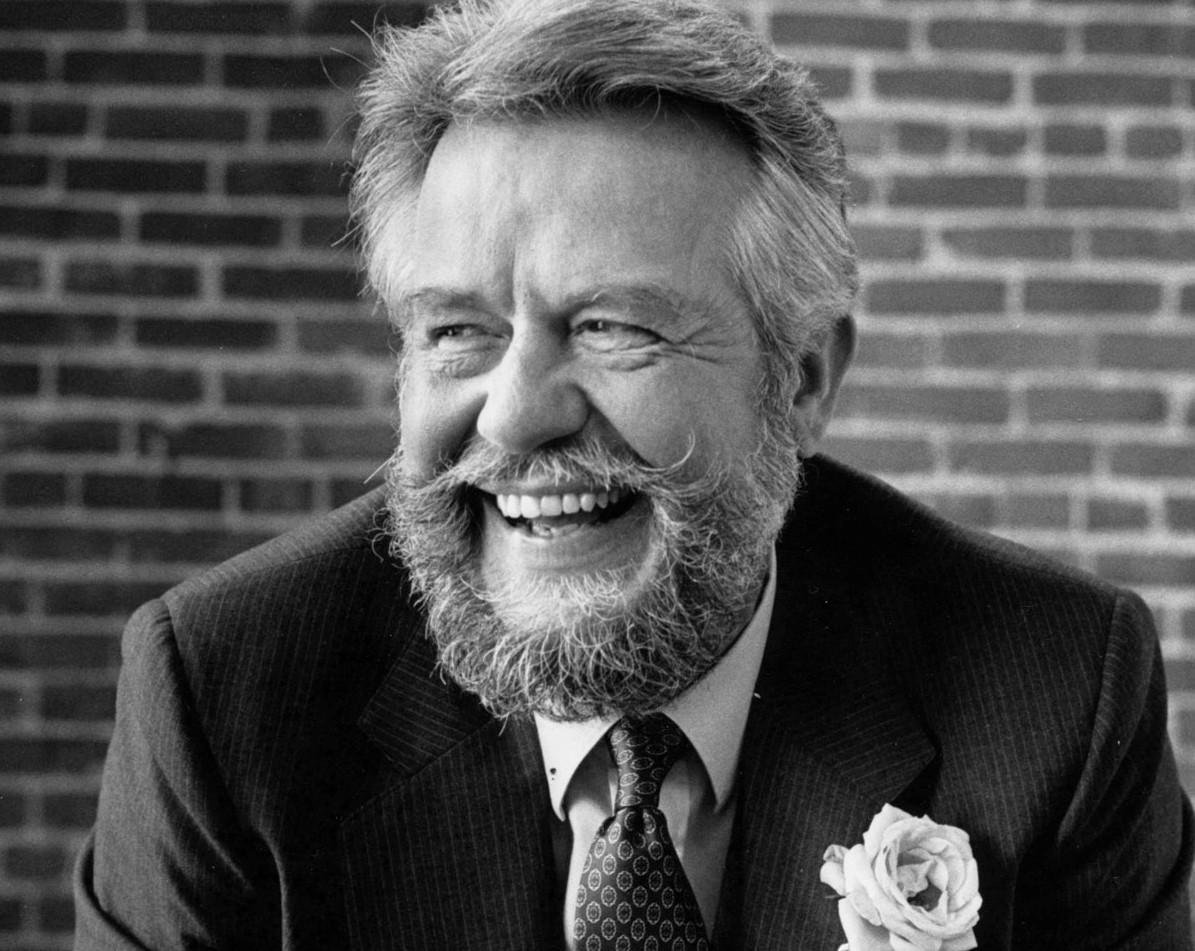
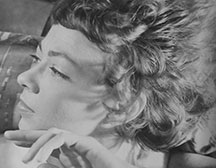
![Photo of Prof. Marvin Levich [philosophy 1953–94]](https://www.reed.edu/reed-magazine/in-memoriam/assets/images/2022/LTL-levich1.jpg)
![Photo of President Paul E. Bragdon [1971–88]](https://www.reed.edu/reed-magazine/in-memoriam/assets/images/2020/Bragdon.jpg)
![Photo of Prof. Edward Barton Segel [history 1973–2011]](https://www.reed.edu/reed-magazine/in-memoriam/assets/images/2020/Segel.jpg)
